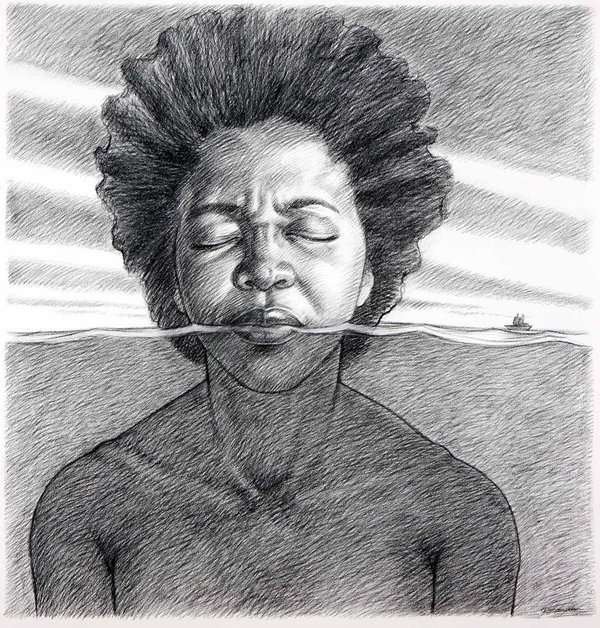How 75 Nigerians who revolted against slavery chose to drown in the U.S


The middle passage is the movement of captured Africans through the Atlantic Ocean after which they were sold in the Americas.
Death and sickness was common along the middle passage as a result of the poor ventilation, limited space, poor diet and shortage of medical supplies that the slaves had to endure.
It is reported that over 50 mutinies occurred on slave ships between 1699 and 1865, the most popular of which is the one led by Joseph Cinqué on a Spanish ship. This revolt eventually became the basis of a court case that went as far as the U.S Supreme court.
While the Middle Passage has often been used as leitmotif in the retelling of African and Afro-American history, the Igbo Landing has been less used
The Igbo Landing occurred when Igbo slaves who had taken control of their ship marched into the water and drowned at Dunbar Creek on St. Simons Island, Glynn County, Georgia.
After surviving the rigours of the Middle Passage, the 75 Igbo slaves who were bought for labour on the plantations of John Couper and Thomas Spalding for 100 dollars each.
The slaves were chained and put aboard a small ship to be transported to their destinations. During this voyage, they took control of the ship and grounded it, drowning their captors in the process.
The sequence of actual events is unclear as most of the historical incidence was passed down by oral tradition.
A common version is that the slaves, once ashore, walked into the creek in unison, singing and chanting in Igbo under the direction of someone who seemed to be like a high priest among them.
This mutiny has been referred to in some quarters as the first major freedom march in America's history.
For over two hundred years, the event was considered myth and legend and nothing more. However, research has verified that there is factual and historical basis to the event.
There is no official historical marker at the site, but it is still visited routinely by historians and tourists. The event has also be included in the history curriculum of schools in coastal Georgia.
One of the popular legends associated with the Igbo Landing is the myth of the flying Africans. In some oral accounts, it was reported that the Africans had grown wings, transformed into vultures and flew straight back to Africa.
Toni Morrison, Nobel Laurette, based her novel, 'Song of Solomon' on this myth. Award winning author, Alex Haley, retells this story in his famous novel, 'Roots'. Edwidge Danticat, Haitian author also alludes to this myth in one of her stories in the book 'Krik Krak'. Jamaica Kincaid, Jamaican author has also used the myth of the flying Africans in her work.
Beyonce Knowles, multiple Grammy award winner released a surprise album in April 2016 titled 'Lemonade'.
The album features her superstar rapper husband, Jay Z as well as input from other artists such as The Weeknd, Diplo, Kendrick Lamar and James Blake.
Beyonce quoted Warsan Shire, a Somali-British poet in the Lemonade album. Laolu Senbanjo, a Nigerian artist had his body painting work featured on the album as well.
'Love Drought', a track on the album, relies heavily on imagery from the Igbo Landing, sparking discussion internationally about the historical event.
Beyonce in Love drought
Beyonce in Love drought (owning-my-truth)
The video is set in a marshy area, and it shows Beyonce leading a group of black women into the water, almost as if they are about to drown themselves.
Hi! I am a robot. I just upvoted you! I found similar content that readers might be interested in:
http://www.pulse.ng/lifestyle/food-travel-arts-culture/the-igbo-landing-how-75-nigerians-who-revolted-against-slavery-chose-to-drown-in-the-u-s-id5354990.html